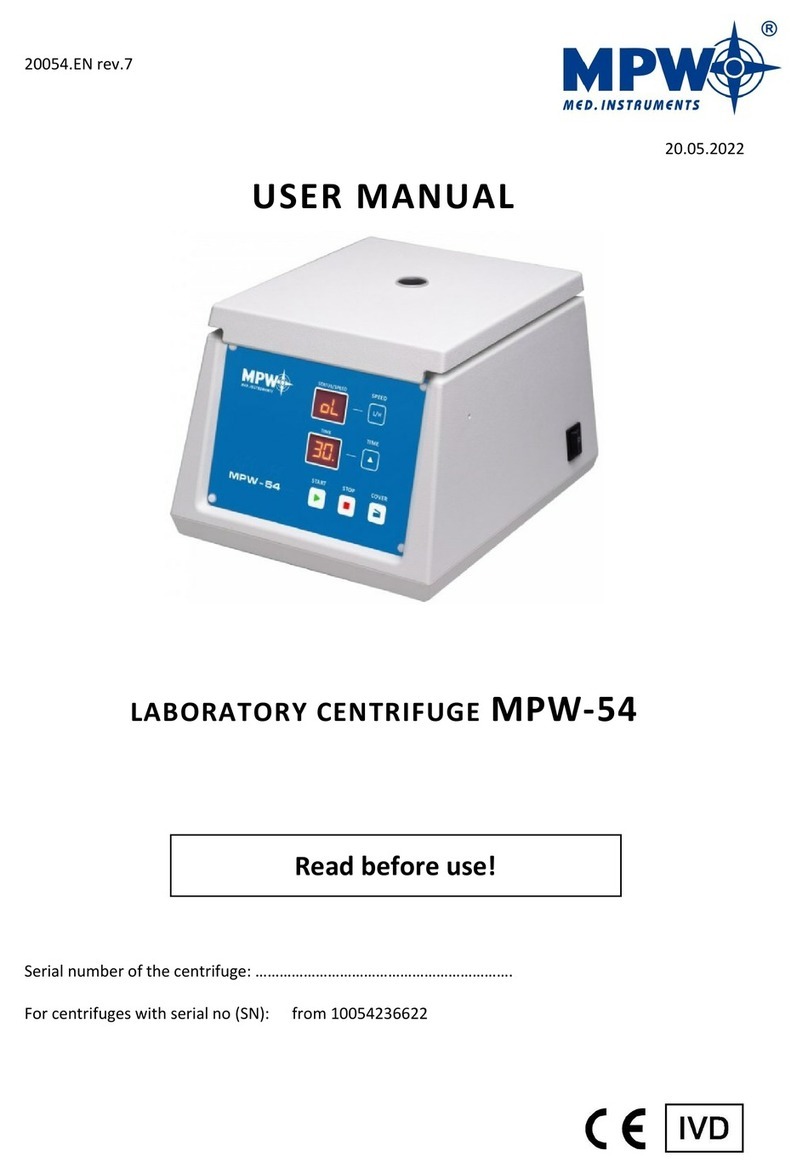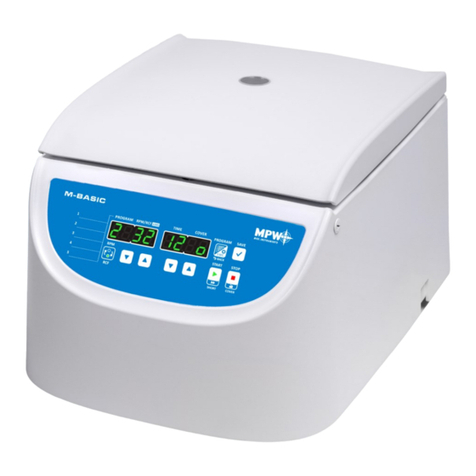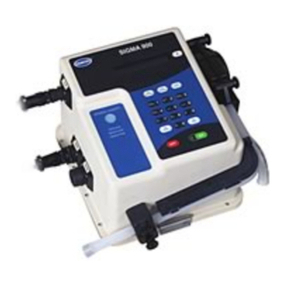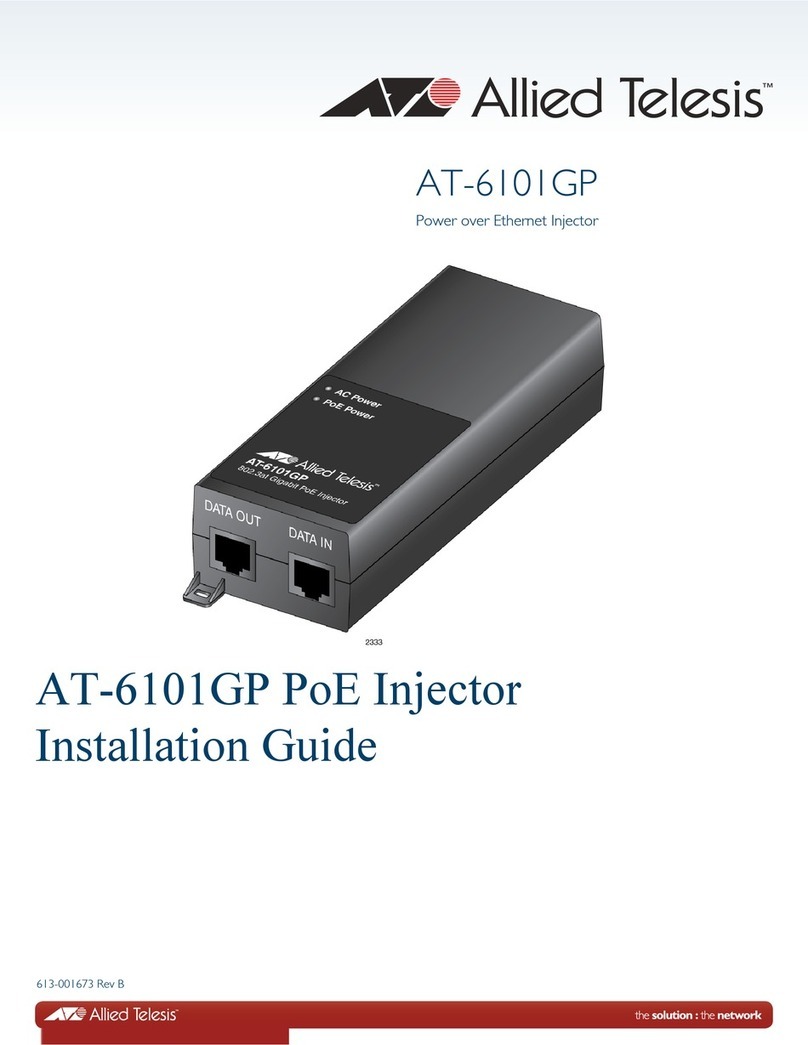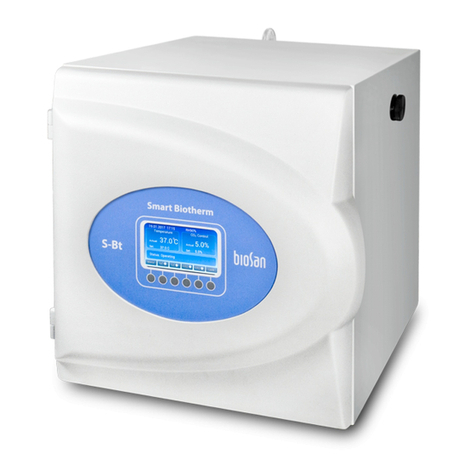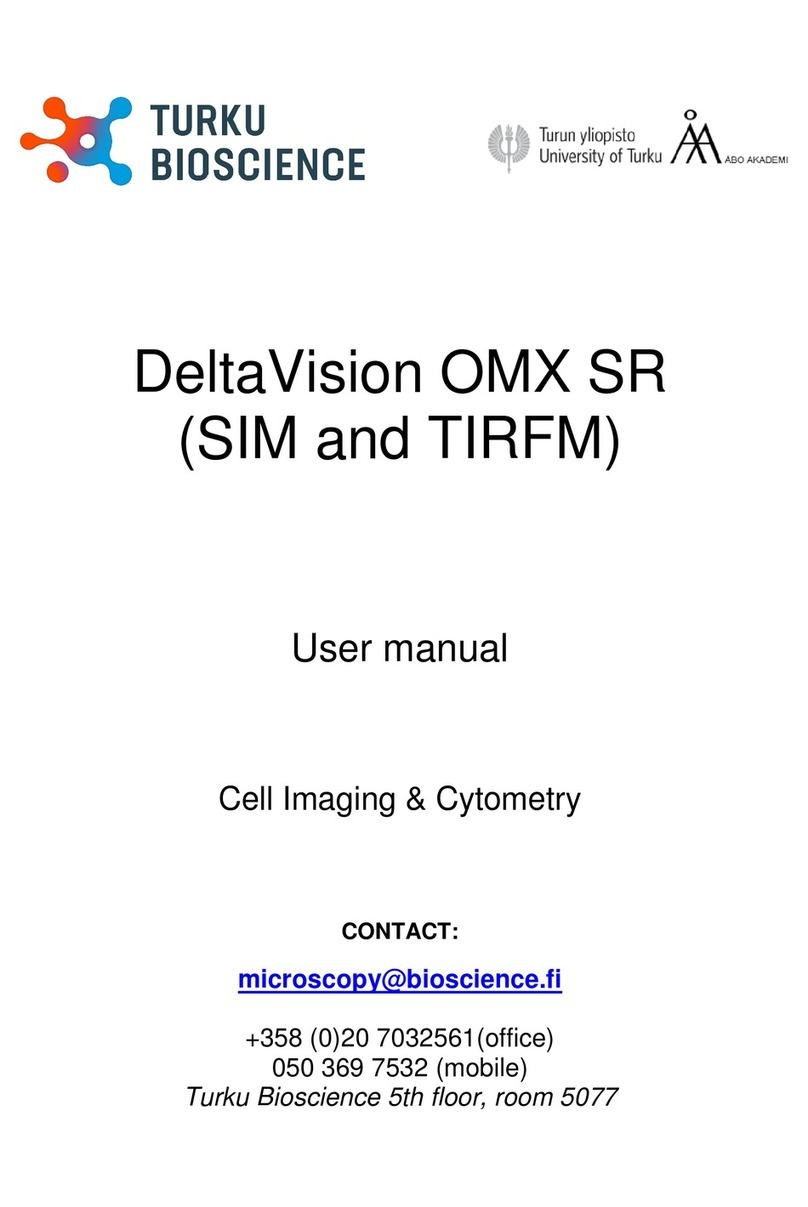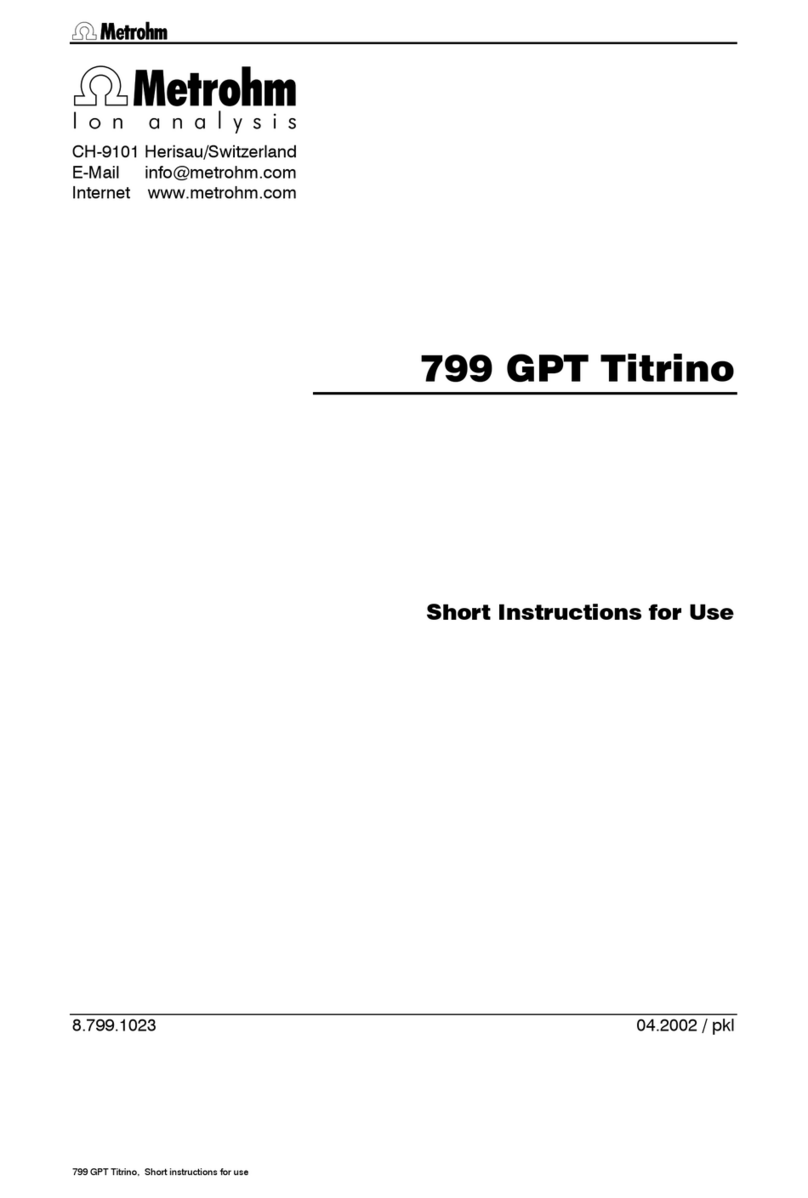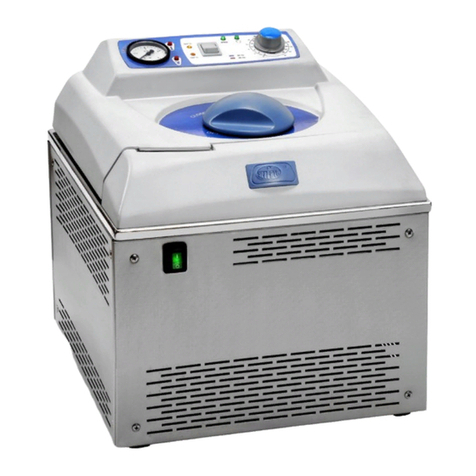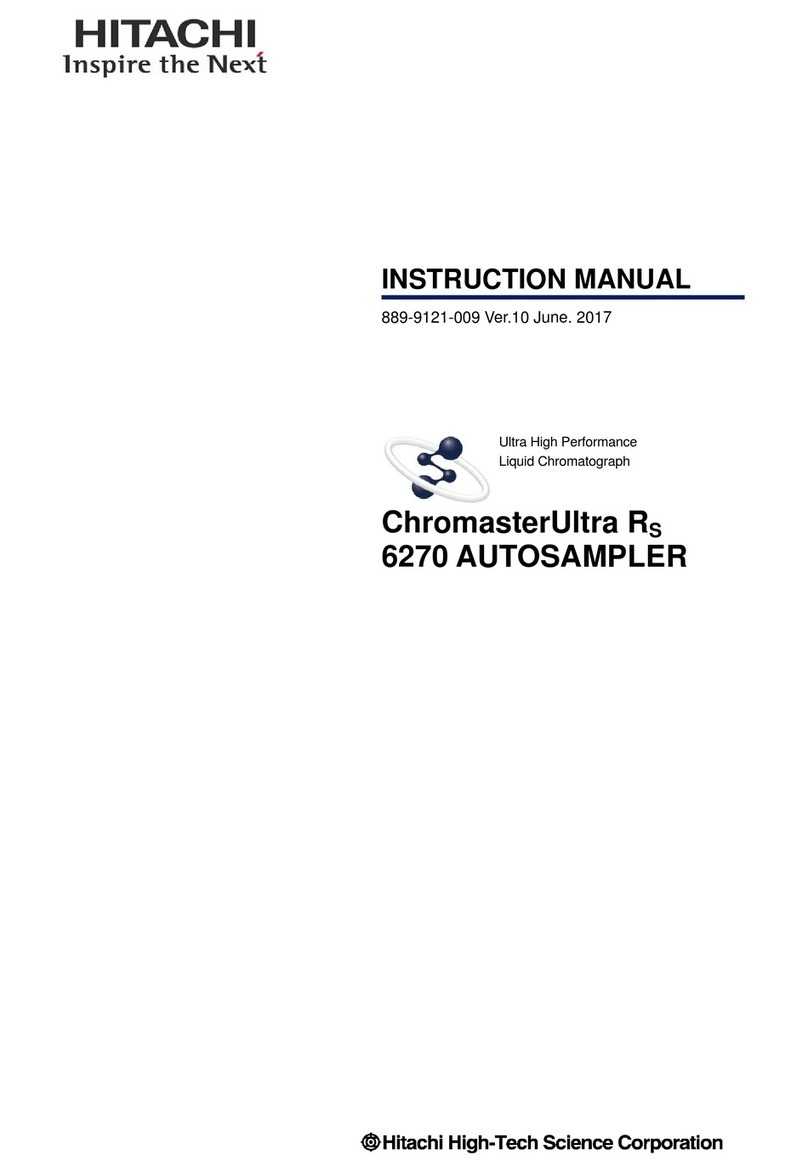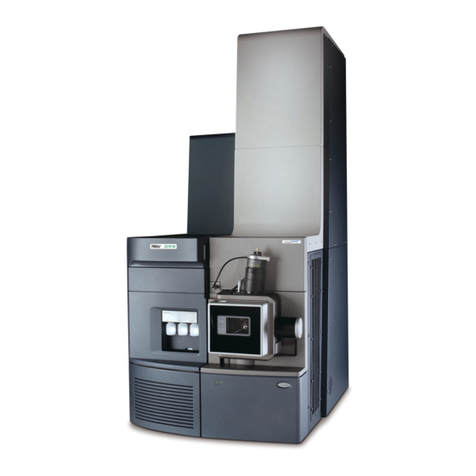MPW MED. INSTRUMENTS MPW-54s User manual

20054.EN rev.11
USER MANUAL
MPW-54
MPW-54s
Read before use!
Serial number of centrifuge: ……………………………………………………….
For centrifuges with serial no (SN):
MPW-54
10054237122 –…
MPW-54s
10054s000123 –…

2
This manual was prepared with special care. MPW MED. INSTRUMENTS may change the
manual at any time and without notice because of improvements, typographical errors, or
improvements to facilities
All rights reserved. No part of this User Manual may be modified, distributed, published, or
reproduced without the prior permission of MPW MED. INSTRUMENTS.
You can find the current version of the user manual on our website under:
www.mpw.pl DOWNLOAD section (one should choose demanded language version of website).

3
Content
1. Symbols used in the manual and on the device .....................................................................................4
1.1. Markings on the device.......................................................................................................................... 4
2. Application............................................................................................................................................ 5
3. Technical specification .......................................................................................................................... 6
3.1. Environmental conditions ...................................................................................................................... 6
4. Installation ............................................................................................................................................ 7
4.1. Unpacking............................................................................................................................................... 7
4.2. The contents of the package.................................................................................................................. 7
4.3. Consumable Materials ........................................................................................................................... 7
4.4. Location.................................................................................................................................................. 8
4.5. Current protection ................................................................................................................................. 8
5. Safety notes .......................................................................................................................................... 9
5.1. General remarks..................................................................................................................................... 9
5.2. Placing the rotor and accessories in the centrifuge ............................................................................... 9
5.3. Filling tubes .......................................................................................................................................... 10
5.4. Filling the rotor..................................................................................................................................... 10
5.5. Safety hints........................................................................................................................................... 11
5.6. Operating conditions............................................................................................................................ 12
5.7. Equipment life...................................................................................................................................... 12
5.8. Work safety .......................................................................................................................................... 13
5.9. Residual risk ......................................................................................................................................... 13
5.10.Obligation to report a serious device incident..................................................................................... 13
6. Product description ............................................................................................................................. 14
6.1. Product Design and Appearance.......................................................................................................... 14
6.2. Name plate........................................................................................................................................... 15
6.3. Control device ...................................................................................................................................... 15
6.4. Set up parameters................................................................................................................................ 15
6.5. Safety features ..................................................................................................................................... 15
6.6. Increase in temperature....................................................................................................................... 16
7. Centrifuging......................................................................................................................................... 16
7.1. Control panel........................................................................................................................................ 16
7.2. HOLD mode .......................................................................................................................................... 16
7.3. End of the centrifuging......................................................................................................................... 16
7.4. Signaling states of centrifuge ............................................................................................................... 17
8. Maintenance ....................................................................................................................................... 18
8.1. Cleaning of the centrifuge.................................................................................................................... 18
8.2. Maintenance of centrifuge elements................................................................................................... 18
8.3. Sterilization .......................................................................................................................................... 20
8.4. Autoclaving........................................................................................................................................... 20
8.5. Chemical resistance.............................................................................................................................. 22
9. Troubleshooting .................................................................................................................................. 23
9.1. Emergency cover release ..................................................................................................................... 23
10.Guarantee ........................................................................................................................................... 24
11.Transport and storage ......................................................................................................................... 24
11.1.Transport and storage conditions ........................................................................................................ 24
11.2.Disposal................................................................................................................................................ 25
12.List of changes in the manual .............................................................................................................. 25
13.Manufacturer’s info............................................................................................................................. 26
Distributor’s info....................................................................................................................................... 26
14.Annexes............................................................................................................................................... 26
A. Additional accessories
B. Declaration of conformity (CE, ROHS 2)
C. Declaration of decontamination (repair / return)
D. Nomogram RPM / RCF

4
1. Symbols used in the manual and on the device
Symbol
Explanation
WARNING!
Warning of potential injury or health risk
DANGER!
Risk of electric shock with potential for severe injury or death as a consequence
DANGER!
Biohazard with potential for risk to health or death as a consequence
DANGER!
Risk of explosion with potential for severe injury or death as a consequence
Symbol identifying a medical device for in vitro diagnostic use
CE mark
Symbol informing about the method of disposal
Please read the instruction manual before you start working with the device
Manufacturer's data
1.1. Markings on the device
Symbol
Explanation
Location
Information about the
direction of rotation of the
rotor
Under the centrifuge
lid
Reminder for proper rotor
maintenance and
Information about correct
and incorrect filling of
rotors
Under the centrifuge
lid

5
Information about the
place of danger
On the side of the
centrifuge next to the
emergency opening of
the lid
Information reminding
about the proper
tightening of the rotor
Under the centrifuge
lid
2. Application
▪The MPW-54/MPW-54s centrifuge is a bench-top non-automatic laboratory centrifuge.
▪The device is intended for In Vitro Diagnostics (IVD). This means that it is an in vitro
diagnostic medical device - in accordance with the Regulation of the European Parliament
and of the Council (EU) 2017/746 of 5 April 2017 on in vitro diagnostic medical devices and
repealing Directive 98/79/EC and Commission Decision 2010 /227/EU.
▪The centrifuge is used to separate aqueous solutions and suspensions of samples with a
density not higher than 1.2g/cm3 taken from human, animal and plant organisms into
components of different densities under the influence of centrifugal force, in order to
provide information about their biological state and to other analytical work.
▪The design of the centrifuge ensures ease of use, safe operation and a wide range of
applications in medical, biochemical and other analysis laboratories.
▪The centrifuge is not biotight, therefore, when centrifuging preparations that require
biotightness, containers and rotors with a biotightness certificate should be used.

6
3. Technical specification
manufacturer
"MPW MED. INSTRUMENTS" SPÓŁDZIELNIA PRACY,
Boremlowska 46 Street, 04-347 Warsaw
type
MPW - 54
MPW –54s
cat. no (REF)
10054/
2-56
10054/1-
56/100
10054/1-
56/110
10054/1-
56
10054/1-
56/127
10054/
2-56/S
10054/1-
56/100/S
10054/1-
56/110/S
10054/1-
56/S
10054/1-
56/127/S
mains voltage
(L1+N+PE)
230V
100V
110V
120V
127V
230V
100V
110V
120V
127V
±10%
±5%
±10%
±5%
frequency
50/60Hz
connected load
(max)
65W
overcurrent
protection
fuse WTA-T 2A 250V
capacity (max)
120ml
speed –RPM
(L) 3500, (H) 5800
(L) 1000, (H) 3500*
force –RCF
1137, 3122
93, 1137
kinetic energy
(max.)
550 J
running time
01:00 30:00 [min., s] (step 1min.)
short-time
operation mode
–SHORT
no
continuous
operation mode
–HOLD
yes
Protection
degree
(according to
PN-EN 60034-
5:2021-01)
IP 20
electromagnetic
compatibility
according to EN 61326-2-6:2006
height (H)
180 mm
width (W)
220 mm
depth (D)
270 mm
height with
open lid(Hoc)
367 mm
noise level
≤ 56 dB
weight of
centrifuge 230V
approx. 4,2 kg
weight of
centrifuge 120V
approx. 4,2 kg
*- It is possible to change the speed Hand Lin the range from 500 to 5800 RPM
3.1. Environmental conditions
▪The device may only be used indoors.
▪The permissible ambient temperature is 2°C to 40°C.
▪Maximum allowed relative humidity 80% at temperature up to 31°C decreasing linearly to
50% relative humidity at 40°C.
▪The mains voltage fluctuations must not exceed ± 10% of the nominal voltage.
▪Maximum altitude 2,000 m above sea level.
▪Overvoltage category II.
▪Pollution degree 2.

7
4. Installation
4.1. Unpacking
Open the package. Remove the box containing the accessories. Take out centrifuge from the
container. Keep the box and packing materials in case of service shipping
4.2. The contents of the package
4.2.1. MPW-54
Name
Quantity
(pcs)
Cat No.
Centrifuge MPW-54
1
10054/2-56 or
10054/1-56 or
10054/1-56/100 or
10054/2-56/110 or
10054/2-56/127
(depending on the power supply
variant)
Rotor fixing screw
1
17168
Rotor key
1
17099T
Key for emergency cover release
1
17162
Power cord 230V/120V
1
17866/17867
Fuse WTA T2A 250V
2
17859
Petroleum jelly 20ml
1
17201
User manual
1
See page 1
4.2.2. MPW-54s
Name
Quantity
(pcs)
Cat No.
Centrifuge MPW-54s
1
10054/2-56/S or
10054/1-56/S or
10054/1-56/100/S or
10054/2-56/110/S or
10054/2-56/127/S
(depending on the power supply
variant)
Rotor fixing screw
1
17168
Rotor key
1
17099T
Key for emergency cover release
1
17162
Power cord 230V/120V
1
17866/17867
Fuse WTA T2A 250V
2
17859
Petroleum jelly 20ml
1
17201
User manual
1
See page 1
4.3. Consumable Materials
Only original MPW buckets can be used! One should use tubes which dimensions, and
durability is proper! Using of tubes from other companies should be consulted with
manufacturer of centrifuge. In the centrifuge, disinfectants and cleaning agents
generally used in medical care should be used (e.g., Aerodesina-2000, Lysoformin
3000, Melseptol, Melsept SF, Sanepidex, Cutasept F).

8
4.4. Location
▪The device should be lifted from below near its feet and placed directly on a
suitable laboratory table.
▪The centrifuge should be set so that access to the power switch is not difficult.
▪Do not place the centrifuge near heaters and avoid direct sunlight.
▪The table on which the centrifuge is placed should be stable and have a flat,
leveled top.
▪A protection zone of at least 30 cm on all sides should be provided around the
centrifuge. The ambient temperature for normal operating conditions of the
centrifuge is given in section Environmental conditions.
▪When changing the place from cold to warm, water condensation inside the
centrifuge will occur. It is important to allow sufficient time for drying before
restarting the centrifuge (minimum 4 hours).
▪The supply voltage must match the voltage specified on the rating plate.
Laboratory centrifuges by "MPW MED. INSTRUMENTS" are devices with a basic
safety class and have a three-wire connection cord with a plug resistant to
dynamic loads.
▪The power socket should have a protective pin.
▪It is recommended to install an emergency switch located far from the
centrifuge near the exit from the room or outside the room.
▪Before switching on, check if the centrifuge is properly connected to the
power supply.
▪Only the power cord recommended by the manufacturer may be used.
4.5. Current protection
The centrifuge is equipped with thermal current protection. Fuse is situated in the
plug-in socket unit at back wall of the centrifuge.

9
5. Safety notes
5.1. General remarks
▪The laboratory centrifuge may be operated only by qualified laboratory personnel,
after reading the operating manual.
▪The operating instructions are part of the product.
▪The operating manual should always be kept in the vicinity of the centrifuge.
▪The centrifuge cannot be operated contrary to its purpose.
▪If the centrifuge is used in a manner inconsistent with the manufacturer's
guidelines, the safety of its use may be impaired.
▪For centrifugation in the centrifuge, only containers and inserts provided in the list
of equipment and centrifuge tubes, the diameter, length and strength of which are
appropriate, should be used. The use of test tubes not included in the list should be
agreed with MPW MED. INSTRUMENTS or its authorized representatives.
▪Pay attention to the quality and appropriate thickness of the glass test tubes walls.
Glass tubes should be centrifuge tubes, and their use in the centrifuge should be
made dependent on the following guidelines:
glass tubes
max RCF
in angular rotors
5-10 ml
3000 x g
30-100 ml
spinning not allowed
▪Weighing the filled test tubes into the rotor is recommended. This will allow to
minimize the differences in mass between them, and as a result to avoid the
negative impact of vibrations on the engine suspension and to reduce noise levels
during the operation of the centrifuge.
5.2. Placing the rotor and accessories in the centrifuge
▪Connect the centrifuge to the power supply (mains socket at the back of the
centrifuge).
▪Turn on the centrifuge (switch on the side of the centrifuge).
▪Open the cover of the centrifuge by pressing the COVER key. Before installing the
rotor, check that the rotating chamber is free from any contamination. If there is
dust, glass splinters, liquid residues, etc., remove them.
▪The rotor can fall if not handled properly, therefore it should always be handled and
placed in the centrifuge using both hands.
▪Place the rotor on the motor axis by sliding it onto the cone as far as it will go
(keeping the coaxiality between the rotor and the motor axis).
▪Screw the screw fixing the rotor into the motor axis (clockwise), and then tighten it
firmly with the rotor key.
▪Fill the rotor with containers / hangers / test tubes according to recommendations in
section Filling the rotor.
▪In order to replace the rotor, first remove the tubes and containers from it, unscrew
the screw fixing the rotor with the enclosed rotor key, counterclockwise, then using
both hands, grab the rotor on opposite sides and remove it from the motor axis.
▪Install another rotor as described above instructions.

10
5.3. Filling tubes
▪Fill test tubes outside the centrifuge.
▪If the manufacturer of the test tube has not specified the maximum level, fill the
test tubes so that the centrifuged substance does not run out of the vessel during
centrifugation. To do this, use the formula below:
5.4. Filling the rotor
CAUTION!
▪Angle rotors must be used with a suitable cover which must be screwed securely
onto the rotor. The rotor and the cover are marked with the same catalog number
(REF) to eliminate the risk of incorrect selection when you have several types of
rotors.
▪Check that the impeller is seated correctly and firmly bolted to the motor shaft.
▪Do not exceed the maximum rotor load (information is provided on the rotor).
An example of the marking on the angular rotor:
MAX. 24x2,4g - means the possibility of placing 24 test tubes in the rotor, each
weighing 2.4 g.
▪To ensure symmetrical loading, insert test tubes of the same type and weight in
pairs into opposite openings of the rotor. If reduction inserts are used, they should
also be placed in the holes opposite to each other in pairs of the same type.
Centrifugation force
centrifuged substance
A
C
B
A–internal tube diameter
B–tube height
C–max liquid level

11
Examples of correct and incorrect arrangement of test tubes in the rotor:
5.5. Safety hints
ROTOR MAINTENANCE
▪In order to increase the durability of gaskets, threaded places, rotor pins,
undercuts for pins in containers, they must be cleaned, and then it is necessary to
lubricate them with the technical petroleum jelly supplied with the device (catalog
number 17201).
▪Use only accessories that are in good technical condition.
HU EQUIPMENT MAINTENANCE
▪Make sure the sealing rings (rubber) are lightly coated with grease to maintain
tightness. Use high vacuum silicone grease, eg type "C" by LUBRINA.
HAZARDOUS MATERIALS
▪Infectious materials should be centrifuged only in containers / rotors with covers.
▪It is not allowed to centrifuge toxic or infectious materials if the rotor or test tube
seal is damaged.
▪Appropriate disinfection procedures should always be carried out, if hazardous
substances have contaminated the centrifuge or its accessories.
EXPLOSIVE, FLAMMABLE MATERIALS
▪It is not allowed to centrifuge explosive and inflammable materials.
▪Do not centrifuge substances that could create a potentially explosive atmosphere
as a result of the high energy supply during centrifugation.
▪The centrifuge must not be used in an explosive atmosphere.
▪It is not allowed to centrifuge materials that may generate flammable or explosive
mixtures when exposed to air.

12
5.6. Operating conditions
START-UP
▪Before switching on the device, carefully read all sections of this manual in order
to ensure the correct operation of the device and to avoid damage to the device
or its accessories.
CENTRIFUGAL SUBSTANCES
▪Rotors are designed for centrifuging liquids with an average density of 1.2 g / cm3
or less. This applies to centrifugation at maximum speed. If liquids with a higher
density are to be used, be sure to enter the density value in the PARAM /
DENSITY tab in order to reduce the available spin speed.
5.7. Equipment life
▪Each spin cycle in which the rotor has accelerated and decelerated is considered a
duty cycle, independent of speed and duration.
▪Do not use the equipment after the allowable after the maximum service life - 5
years.
GENERAL REMARKS
▪Only original equipment of centrifuges and spare parts should be used.
▪In case of a malfunction of the centrifuge, the MPW MED factory service should
be used. INSTRUMENTS or its authorized representatives.
▪It is not allowed to start the centrifuge if it is not installed correctly or the rotor
and accessories are not properly mounted.
▪The centrifuge must not be transported with the rotor installed on the motor
shaft.
▪Fill the rotor equipment to the same weight in order to prevent unbalance of the
centrifuge (point Filling the rotor).

13
5.8. Work safety
The centrifuge should be inspected by an authorized service at least once a year (after the warranty
period). Special circumstances, e.g., corrosive environment, may be the reason for more frequent
checks. Tests should end with issuing a validation protocol, which specifies checking the technical
condition of a laboratory centrifuge.
It is recommended to create a document that records all repairs and inspections. This document
should be kept in the place where the centrifuge is used.
CONTROLS CONDUCTED BY THE OPERATOR
▪The operator must pay attention to the fact that the parts of the centrifuge,
important from the safety point of view, are not damaged. This remark applies to:
▪Centrifuge accessories, especially structural changes, corrosion, initial cracks,
abrasion of metal parts.
▪Bolted connections.
▪Inspection of rotor and container seals, if any. Particular attention should be paid to
rubber elements (seals). In the event of any damage or visible structural changes,
they should be immediately replaced with new ones.
▪Control of the performance of annual post-warranty inspections of the technical
condition of the centrifuge.
▪During centrifugation, it is not allowed to lift, shift the centrifuge or rest on it.
▪During centrifugation one must not stay in the safety zone, i.e., 30 cm distance
around the centrifuge, nor leave any objects, e.g., glass vessels, inside this zone.
▪It is not allowed to put any objects on the centrifuge.
OPENING THE COVER DURING SPINNING
▪It is not allowed to use the emergency cover opening during centrifuging, because it
may result in loss of health or life.
HANDLING OF ROTORS
▪It is not allowed to use accessories (rotors, lids, containers, hangers and round
carriers) with signs of corrosion or other mechanical damage.
▪It is not allowed to centrifuge substances of high corrosive aggressiveness, which
may damage the materials and reduce the mechanical properties of rotors, buckets
and round carriers.
▪It is not allowed to centrifuge rotors with removed or loose covers.
5.9. Residual risk
The centrifuge is built according to the state-of-the-art and the recognized safety regulations.
Nevertheless, still remain some level of residual risk due to improper operation and malfunctions. It
is possible to decrease residual risk by strictly applying user manual conditions and correcting
malfunction which could threaten safety, immediately.
5.10. Obligation to report a serious device incident
Any serious incident related to the device should be reported to the manufacturer and the
competent authority of the Member State where the user or patient resides.

14
6. Product description
6.1. Product Design and Appearance
The new generation of laboratory centrifuges "MPW MED. INSTRUMENTS" is equipped with
modern microprocessor controllers, very durable and quiet brushless asynchronous motors and
equipment that meets modern user requirements. The centrifuge has a rigid self-supporting
structure. The housing is made of ABS plastic. The cover is mounted on metal hinge axes, and from
the front it is closed with an electromagnetic lock blocking the possibility of opening during spinning.
The centrifugation chamber is made of plastic.
1Centrifuge lid
2Inspection glass (is used to control the rest condition of the rotor)
3Emergency cover release
4Name plate
5Control panel (display and control of the centrifuge operation)
6Main’s switch
7Centrifuge power socket (with fuse socket)
Fig.1. Front and rear view of the MPW-54/MPW-54s centrifuge
1
2
3
4
7
6
5

15
6.2. Name plate
The data concerning the device should be read from the rating plate located on the rear wall of the
centrifuge (the picture below is an example).
1Centrifuge model
2Catalog number
3Maximum speed
4Rated voltage
5Maximum rated power
6Kinetic energy
7Serial number
8Approval marks and symbols (exsplained
in chapter 1)
9Rated frequency
10 Minimum speed
11 Manufacturer's logo
12 Manufacturer's information
13 Current protection
14 Density of centrifuged substance
15 QR code for serial number
16 Date of production
6.3. Control device
The microprocessor control unit of the centrifuge ensures broad possibilities of providing,
realisation and reading of work parameters.
6.4. Set up parameters
Data setting and read-out system forms hermetically closed keyboard with distinctly accessible
operation points. Easily readable display signalling time to end of centrifuging and set mode of
speed. It makes easy for the operator to the registration status of the device.
Control system provides possibility of:
▪set up speed mode
H –high speed,
L –low speed.
Speed values are given under "Technical specification".
▪set up time of centrifuging in the range 1÷30 min or hold time mode.
6.5. Safety features
Cover lock
The centrifuge can be started only with properly closed cover. While the cover can be
opened only after stopping the rotor. In case of emergency opening of the cover during operation,
the centrifuge will be immediately switched-off and the rotor will brake till complete stopping.
Rest state inspection
Opening of the centrifuge’s cover is possible only with the rotor in the state of rest.
1
2
3
4
5
6
9
10
8
11
12
15
16
7
13
14

16
6.6. Increase in temperature
In uncooled centrifuges, the temperature in the rotor chamber, rotor and sample can increase to
above 40°C, based on the run time, g-force (rcf)/speed and ambient temperature.
7. Centrifuging
Power switching ON/OFF is carried out with master switch situated on the side wall of the centrifuge.
All settings on the centrifuge are done by means of the control panel.
7.1. Control panel
The control panel (equipped with membrane keyboard) placed on the front casing serves the
purpose of controlling centrifuge operation. STATUS/SPEED display show information about state of
centrifuge (left side) and speed mode (right side). TIME display show information about time remain
to the end of centrifuging.
Fig.4 Control panel
Buttons application:
►
START
Start of centrifuging
STOP
Cancel of centrifuging
COVER
Open the lid
▲
TIME
Set up runtime (in 1 minute step)
L/H
SPEED
Change speed mode
7.2. HOLD mode
HOLD mode
continuous mode (centrifuging until pressing STOP)
▪In order to run the HOLD mode, set the time value to - -
7.3. End of the centrifuging
WAYS OF FINISH THE CENTRIFUGING
▪After reaching the preset working time centrifuging is stopped.
x1
▪Before the expiry of the set time, you can interrupt the cycle by pressing the
STOP

17
7.4. Signaling states of centrifuge
▪Cover is locked
▪Cover is open
▪Rotor is running (speed is increasing or constant) –mark
turn counter-clockwise
▪Rotor is running (breaking) –mark turn clockwise
▪Rotor is running, time is counting –dot next to time
indication is blinking
▪Cycle cancelled or end of centrifuging –a dot next to the
time indication stops flashing, after braking the rotor, four
short beeps are issued
▪Centrifuging in high rotational speed

18
▪Centrifuging in low rotational speed
Centrifuge has memory for remembering the last settings even after turning off and turn on the
centrifuge.
8. Maintenance
8.1. Cleaning of the centrifuge
▪Pull the mains plug before cleaning.
▪Before any cleaning or decontamination process other than that is
recommended by the manufacturer, the user has to ask the manufacturer if the
planned process does not damage the device
▪For cleaning, water with soap or other water-soluble mild detergent shall be used.
▪One should avoid corrosive and aggressive substances.
▪It is prohibited to use alkaline solutions, inflammable solvents or agents containing
abrasive particles.
▪Do not lubricate the centrifuge motor shaft.
▪The unused centrifuge should have cover opened.
Once a week
Using wiping cloth, remove condensate or residues of the products from the rotor
chamber.
Once a month
▪Check the condition of the rotor mounting screw thread. If damaged, it must be
replaced.
▪Check the centrifuging chamber whether it is damaged. In case of damage, it
cannot be longer put into operation. Notify authorized service workshop.
8.2. Maintenance of centrifuge elements
▪In order to increase the durability of threaded places, they should be lubricated
with technical petroleum jelly.
▪Make sure that the sealing rings (rubber) are covered with a thin layer of
technical petroleum jelly in order to maintain tightness (catalog number 17201
- element of basic equipment).
Cleaning of the equipment
▪In order to ensure safe operation, one shall carry out in regular way periodical
maintenance of the accessories.
▪Rotors, buckets, and round carriers have to withstand high stresses originating
from the centrifugal force. Chemical reactions as well as corrosion (combination of
variable pressure and chemical reactions) can cause destruction of metals. Hard to
observe surface cracks increase gradually and weaken material without visible
symptoms.
▪In case of observation of surface damage, crevice, or other change, as well as the
corrosion, the given part (rotor, bucket, etc.) shall be immediately replaced.

19
▪The rotor, including the fixing screw, buckets and round carriers must be regularly
cleaned to prevent corrosion.
▪Cleaning of the accessories shall be carried out outside of the centrifuge once
every week or still better after each use. For cleaning them one should use neutral
agent of pH value 6÷8. It is forbidden to use alkaline agent of pH > 8. Then, those
parts shall be dried using soft fabric or in the chamber drier at ca. 50°C.
▪Angle rotor should be placed on a fabric with holes facing down, for effective
drying.
▪Do not use bleach on plastic parts of the rotor.
▪In this way, the useful service life of the device is substantially increased and
susceptibility to corrosion is diminished. Accurate maintenance increases the
service life as well and protects against premature rotor failures.
▪Do not use bleach on plastic parts of the rotor.
▪According to laboratory standards, minimize the immersion time in each solution.
▪Especially prone to the corrosion are parts made of aluminium.
▪Corrosion and damages resulting from insufficient maintenance could not be
subject of claims lodged against the manufacturer.
▪The unused rotor should have the lid removed.
HS accessories maintenance (HU):
▪Check the general condition of seals.
▪Make sure that rubber O-rings are lightly coated with silicone grease. Use high
vacuum grease, e.g., type „C” by LUBRINA.
▪In order to maintain hermetic sealing, it is recommended to replace the sealing
rings after each autoclaving.
▪Store hermetically sealed rotors and buckets with the lids removed.

20
8.3. Sterilization
Plastics - legend to abbreviations
PS
polystyrene
ECTFE
ethylene/chlorotrifluoroethylene
SAN
styrene-acrylonitrile
ETFE
ethylene/tetrafluoroethylene
PMMA
polymethyl methacrylate
PTFE
polytetrafluoroethylene
PC
polycarbonate
FEP
tetrafluoroethylene/perfluoropropylene
PVC
polyvinyl chloride
PFA
tetrafluoroethylene/perfluoroalkylvinylether
POM
acetal polyoxymethylenel
FKM
fluorcarbon rubber
PE-LD
low density polyethylene
EPDM
ethylene propylene diene
PE-HD
high density polyethylene
NR
natural rubber
PP
polypropylene
SI
silicon rubber
PMP
polymethylpentene
One can use all standard disinfectants. Centrifuges and devices are made of different materials, one
should consider their variety.
radiation β
radiation γ
25 kGy
C2H4O
(ethylene oxide)
formalin,
ethanol
PS
●
○
●
SAN
○
●
●
PMMA
●
○
●
PC
●
●
●
PVC
○
●
●
POM
●
●
●
PE-LD
●
●
●
PE-HD
●
●
●
PP
●
●
●
PMP
●
●
●
ECTFE, ETFE
○
●
●
PTFE
○
●
●
FEP, PFA
○
●
●
FKM
○
●
●
EPDM
○
●
●
NR
○
●
●
SI
○
●
●
●
may be used
○
cannot be used
In the centrifuge, disinfectants and cleaning agents generally used in medical care should be used
(e.g., Aerodesina-2000, Lysoformin 3000, Melseptol, Melsept SF, Sanepidex, Cutasept F).
8.4. Autoclaving
▪Rotors, buckets, and round carriers can be sterilized in autoclave with temperature 121°C
during 20 min (215 kPa), unless otherwise specified in the OPTIONAL ACCESSORY.
▪During sterilization (autoclaved) by means of steam one should consider temperature
resistance of individual materials.
▪Deformation of the accessories (carriers or lids made of plastic) may occur during autoclaving.
▪Do not autoclave disposable materials (e.g., tubes, cyto-container).
▪The life of the accessory depends on the frequency of autoclaving and use.
▪Autoclaving reduces lifespan of plastic components. They should be replaced if any signs of
damage are visible, including a change in colour or shape or when leakage etc.
▪Pressure in closed containers can cause plastic deformation or explosion.
▪Prior to autoclaving the rotors and accessories, thoroughly wash and rinse with distilled water.
▪Never exceed the permissible autoclaving temperature and time.
This manual suits for next models
11
Table of contents
Other MPW MED. INSTRUMENTS Laboratory Equipment manuals
Popular Laboratory Equipment manuals by other brands
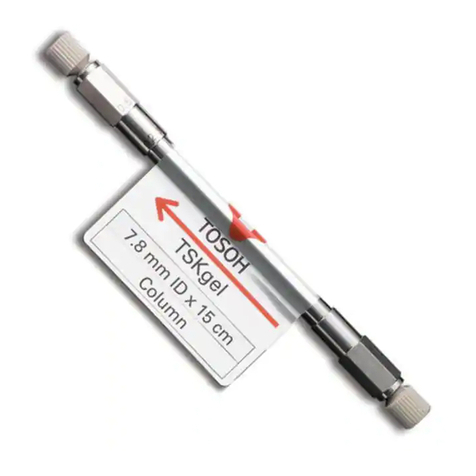
TOSOH BIOSCIENCE
TOSOH BIOSCIENCE Phenyl-5PW instruction manual
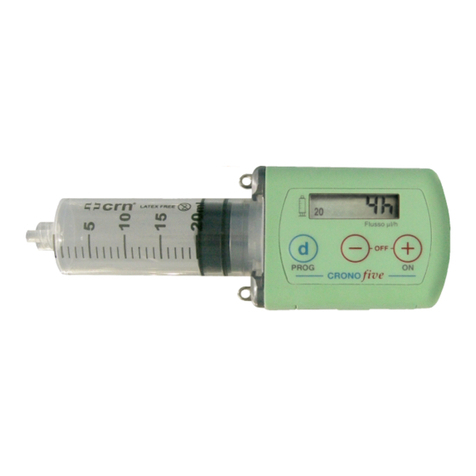
Crono
Crono Five Short Instruction

Thermo Scientific
Thermo Scientific Orion COD165 user guide

JUMO
JUMO CEROS S01 M Interface description

Nickel-Electro
Nickel-Electro Clifton 1000ER Series manual
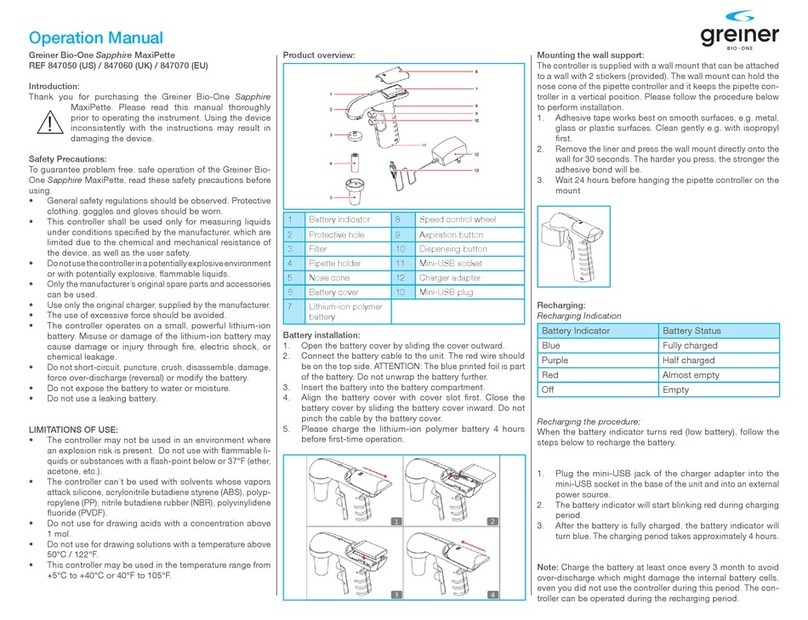
GREINER
GREINER Bio-One Sapphire MaxiPette Operation manual
